
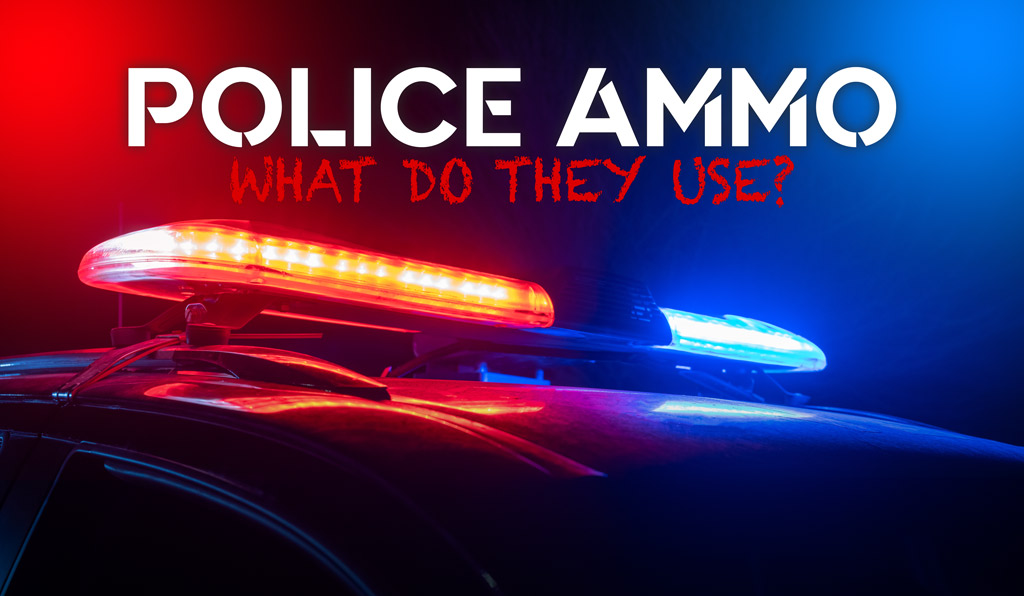
The difficult job of being a police officer requires purpose-driven ammunition. For this article, we’ve interviewed Officer Mike Perez of the Metro DC police. Perez explains common police ammo, and why there’s been a shift in ammunition choice with ballistic advancements.
As you’ll see, police officers share many of the same concerns about ammunition as any other firearm user. Power, capacity, and accuracy all play a significant part in the decision to carry specific types of ammunition. Let’s dive into some details on popular police ammunition.
Police Ammo: Popular Handgun Options
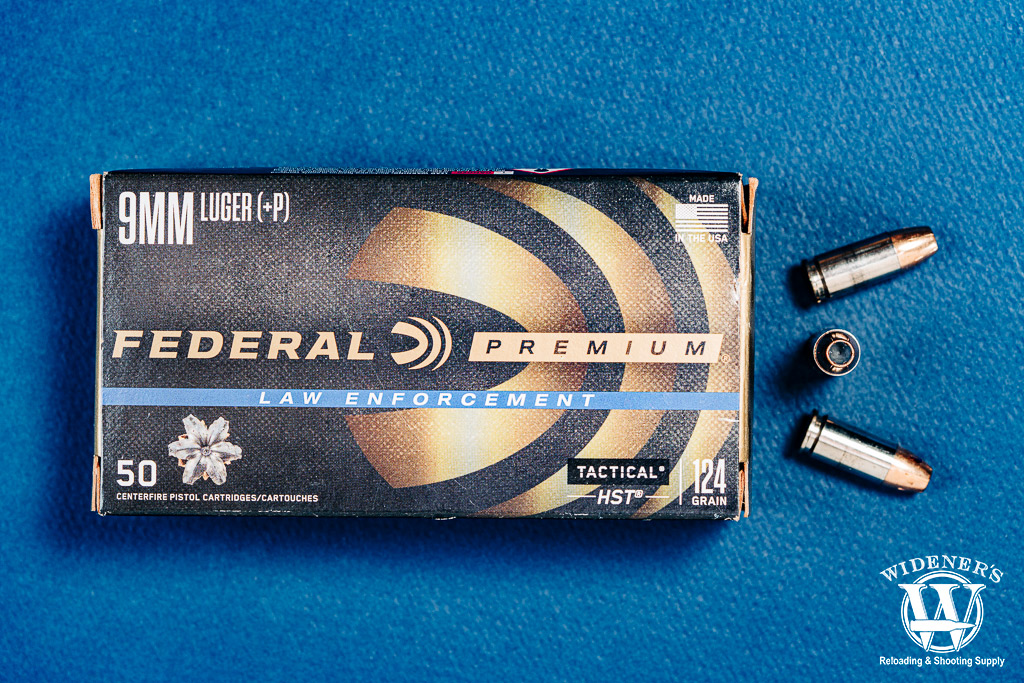
Federal’s tactical HST bullet offers consistent expansion, optimum penetration, and superior terminal performance.
While preparing for a hunt, ammunition is chosen based on the purposes of the hunt. In police work, ammunition is chosen in much the same way. Police officers have several concerns that most hunters don’t, including heightened worries about bystander injury and increased capacity.
Some of the most common handgun ammunition law enforcement chooses:
- 9mm Federal HST 147 grain: Carried by the Arlington County Police Department in Virginia
- 9mm Speer Gold Dot 124 grain JHP: Carried by ICE Agents with the Marshals Task Force
- 9mm Federal HST 124 gr plus-P (Hollow Point): Carried by the Rochester Police Department in New York
- Federal Premium 9mm Luger 147 grain plus-P: Carried by the Rockville Police Department in Maryland
- Hornady Critical Duty 9mm 124 grain Plus-P: Carried by many FBI Agents and ATF Agents
- 9mm Winchester Ranger 124 grain plus-P: Metropolitan Police Department of the District of Columbia
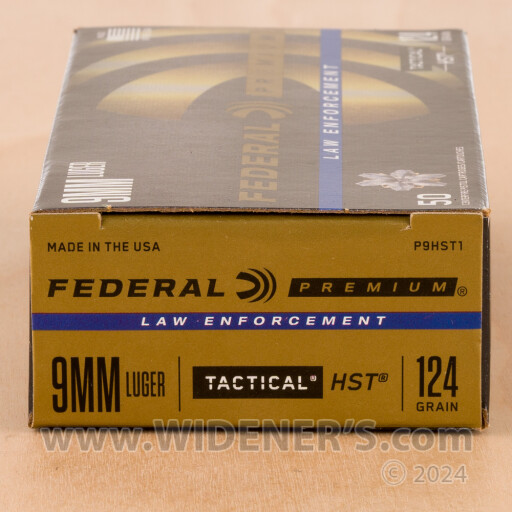
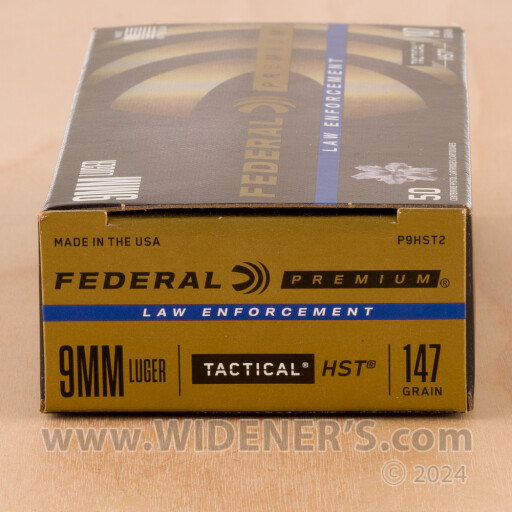





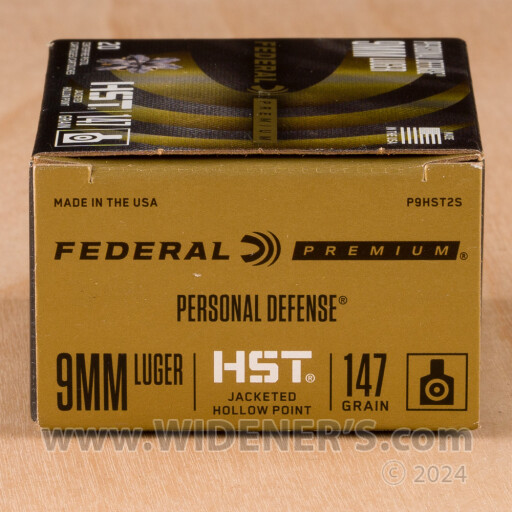



Now let’s take a moment to look at why 9mm is so popular among LE these days.
If you’ve been reading this article up to this point and looking at all the ammunition chosen by police departments, you’re probably asking a simple question: what about the 40-caliber? What about the 45-caliber? The choice to use 9MM comes down to three points: capacity, recoil, and ballistic damage.
Officer Perez provides some insight. Here’s what he has to say about the shift toward 9mm:
“With advancements in ballistic technology, departments are moving back to the 9mm. You can carry more ammunition while having the same amount of internal ballistic damage.” – Officer Perez on why many departments choose 9mm over .40 S&W.
Why Police Choose 9MM: Capacity
Officer Perez explains that with 9MM, an officer can carry a few more rounds when compared with the .40 S&W. While these extra rounds may not seem that significant, officers are looking to maximize their firepower while reducing weight.
Why Police Choose 9MM: Recoil
The 9MM is a familiar round. Even for those who aren’t part of the police force, if someone has had any contact or practice with firearms, they have likely used the 9mm. This familiarity helps ease the learning curve for those who are training to become police officers.
9MM is also an incredibly popular round, so there is little worry about ammunition shortages. Finally, the 9MM typically has less recoil, ensuring that police officers of all physical build and strength can adequately control their sidearm.
However, more than any of these reasons – capacity or ease of use – modern technology is giving 9MM more damage potential.
Why Police Choose 9MM: Sufficient Ballistic Damage
As Officer Perez explained in the quote earlier, modern ballistics make the 9MM a clear choice. In the past, people mentioned everything from capacity to recoil to ease of use, but there was always one final boulder the 9mm couldn’t climb: it doesn’t have the stopping power of the .40 S&W.
Except, these days, the 9mm can offer very comparable ballistic damage to the .40 S&W, while offering all the aforementioned benefits.
Police Ammo: Popular Rifle Options
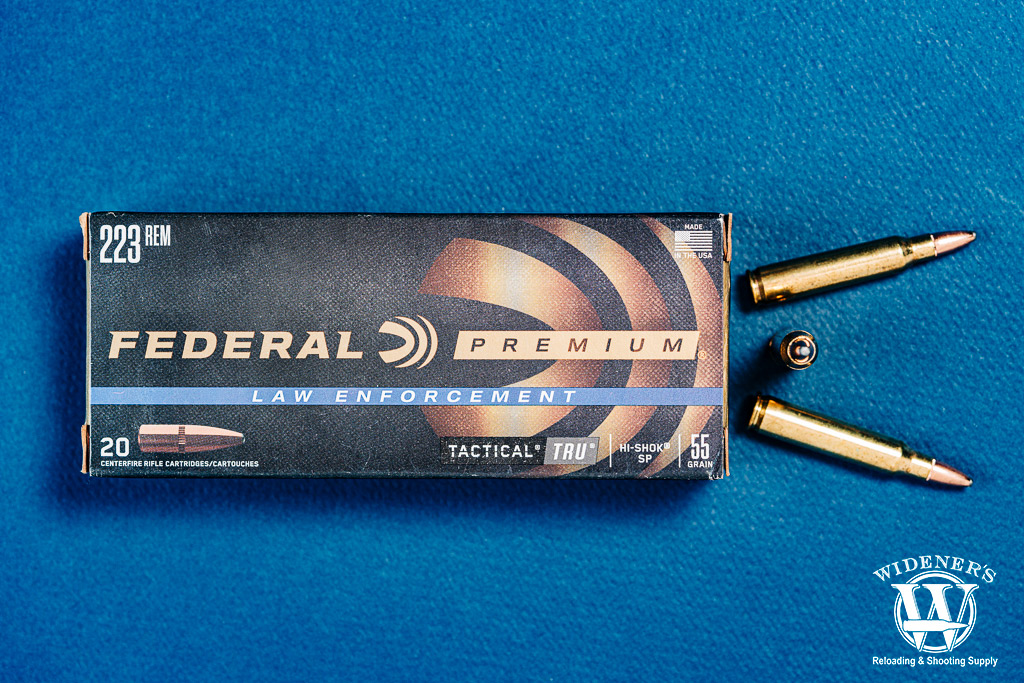
Quality materials and proven performance make Federal Premium Law Enforcement ammo a perfect choice for on-duty officers.
Officer Perez provided some insight into the reasoning behind PD’s use of rifles, and the specific ammunition they choose to get the job done. On the top of their list is concern about accidentally harming someone.
Probably even more so in police work than in any other situation, police officers need to worry about innocent bystanders. For this reason, officers don’t always reach for the most powerful ammunition they can get their hands on. Rather, they choose what they need to get the job done while causing the least unintended damage (overpenetration in buildings, etc).
With that being said, the 223 is probably the most common round chambered in police rifles.
Some of the most common rifle ammunition law enforcement chooses:
- Remington 55 Grain .223: Used by the Arlington County Police Department in Virginia
- Federal 55 Grain .223: Carried by the Rochester Police Department in New York
- The Metro Police Department of the District of Columbia (Metro DC) has two choices, For the patrol officers, they carry 223 Federal Premium LE Tactical TRU, 55 Grain Sierra Game King BTHP. However, their SWAT (or Emergency Response Team) carries Federal Premium 223 Tactical Bonded Soft Point, 62 grain.
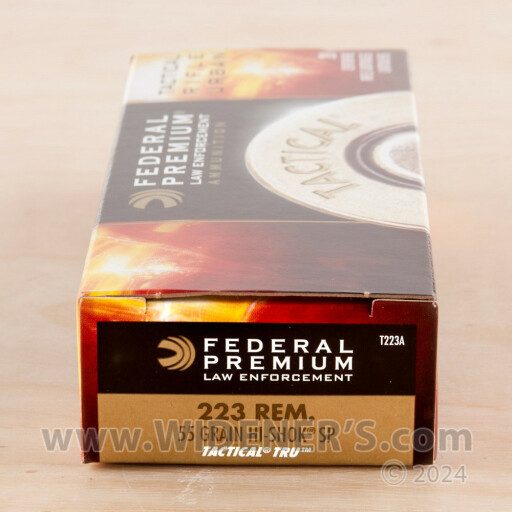

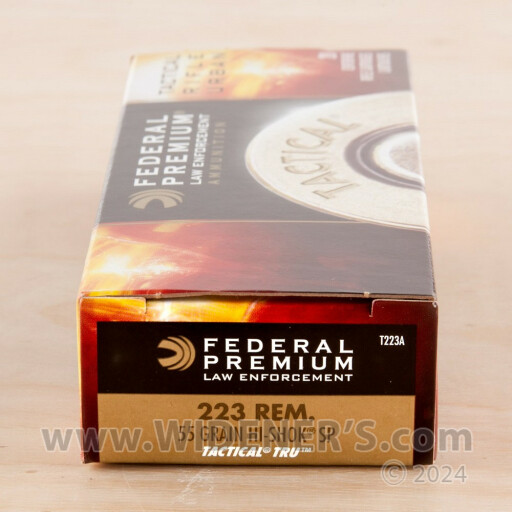

Police Ammo: Popular Shotgun Options
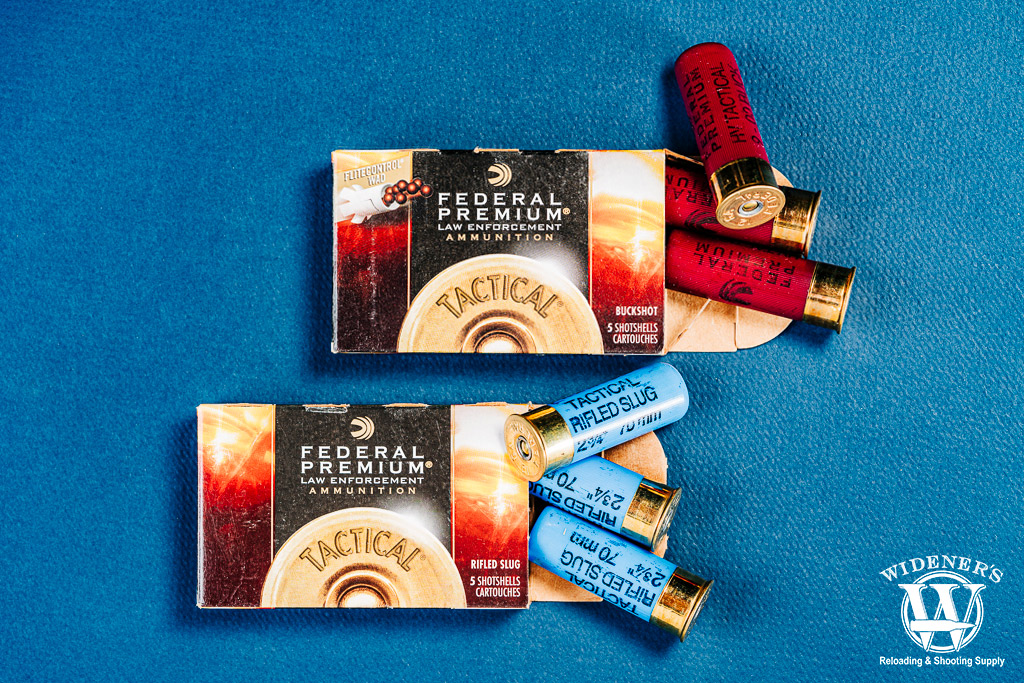
On patrol, a shotgun loaded with Federal Premium Law Enforcement ammo can end a violent threat quickly.
Officer Perez states that shotguns have been a tricky topic for police departments, particularly in the last couple of years. While some departments worry about “show of force” tactics and public perception, other police departments have chosen shotguns due to their clear-cut advantages.
Officer Perez states that shotguns are reliable, powerful at close range, and there’s much less worry about over-penetration (as opposed to rifles). Perez states that some departments have moved away from shotguns, but he also believes that many departments may be getting them back in the years to come.
Some of the most common shotgun ammunition law enforcement chooses:
- Federal Law Enforcement 12-Gauge Rifled Slugs: Used by the Rochester Police Department in New York City.
- Federal Premium Tactical Law Enforcement 12-Gauge 00 Buckshot: Used by various Police Departments in New York City in the 8-9 pellet variety.









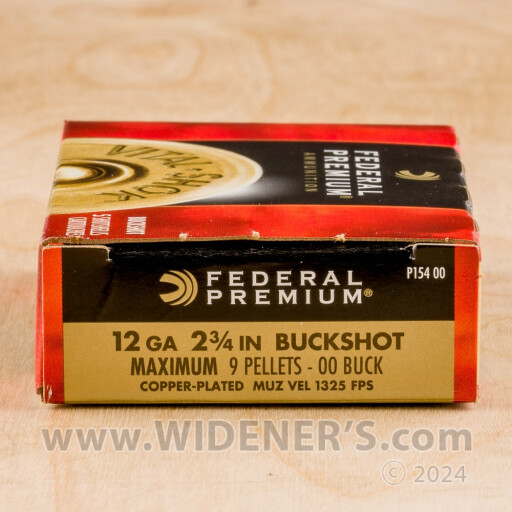


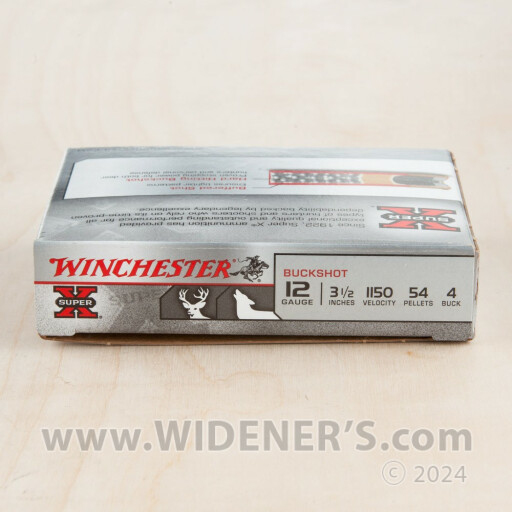







The Most Popular Law Enforcement Ammunition
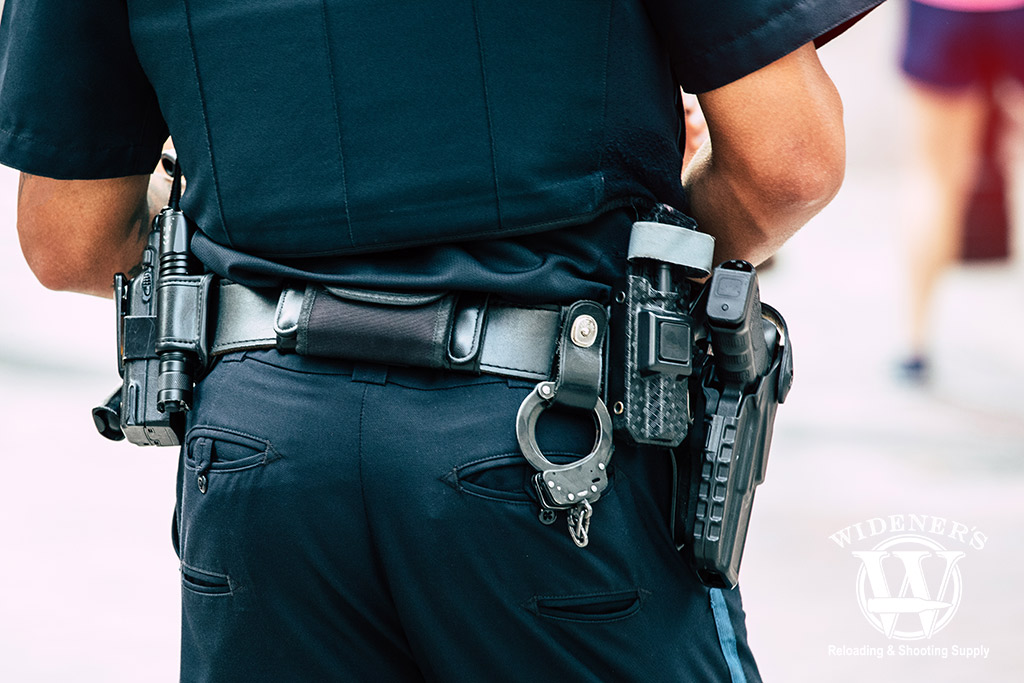
Statistically, if you see a police officer with a holstered handgun, there’s a good chance it’s chambered in 9mm.
There is no single standard when it comes to the ammunition carried by police officers. For handguns, some form of 9mm +P ammunition is popular. When it comes to rifles, .223 soft points are often used. For shotguns, police officers usually stick with the reliable and versatile 12G, often chambered with rifled slugs.
About Officer Mike Perez: Officer Perez is a Metro DC police officer with over eight years of experience. In addition to his roles in the department’s Violent Crime Suppression Unit, Officer Perez is a professional shooter who participates in competitions nationwide.
If you’re curious to learn more about the guns police officers use, read this article to find out.


